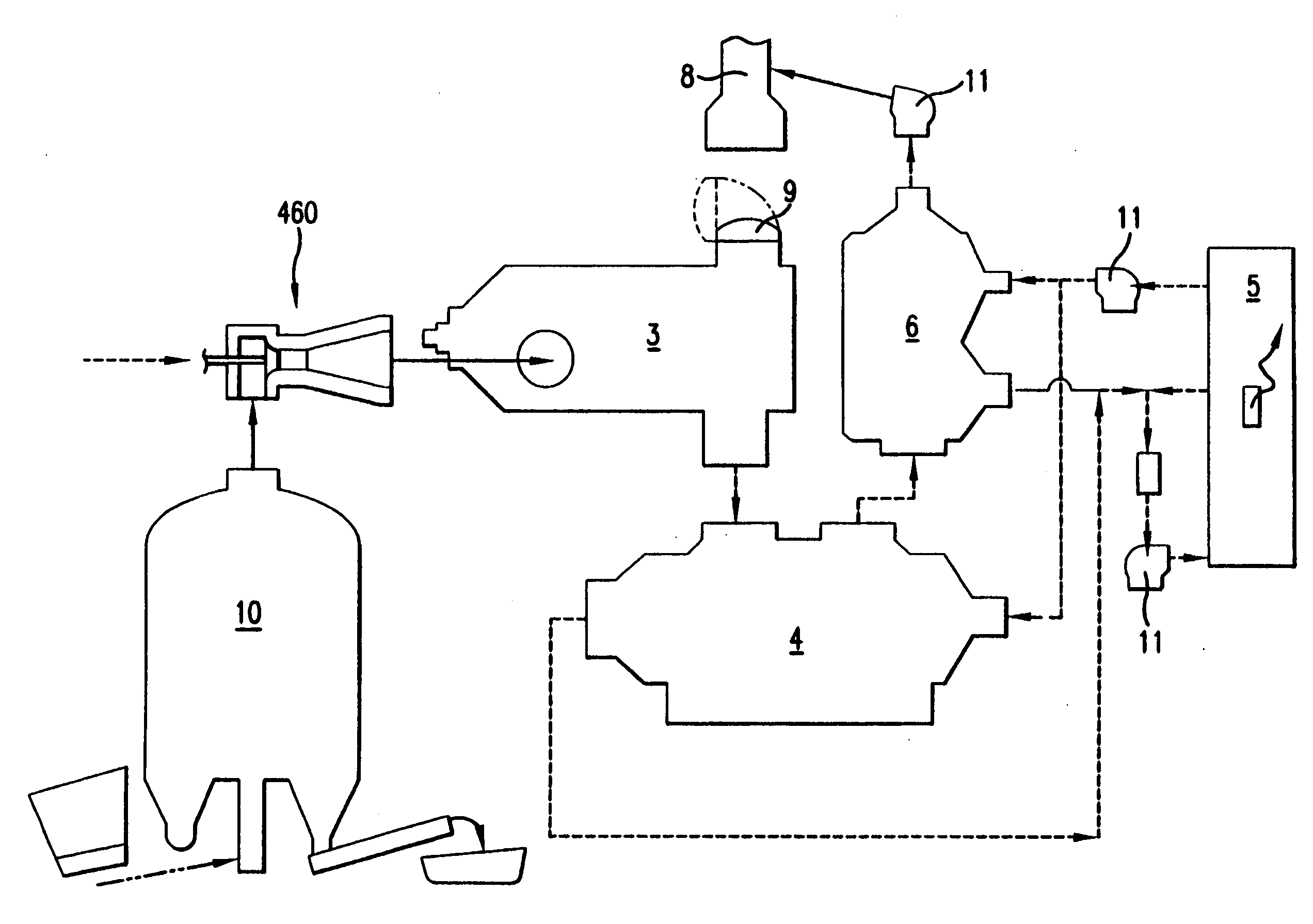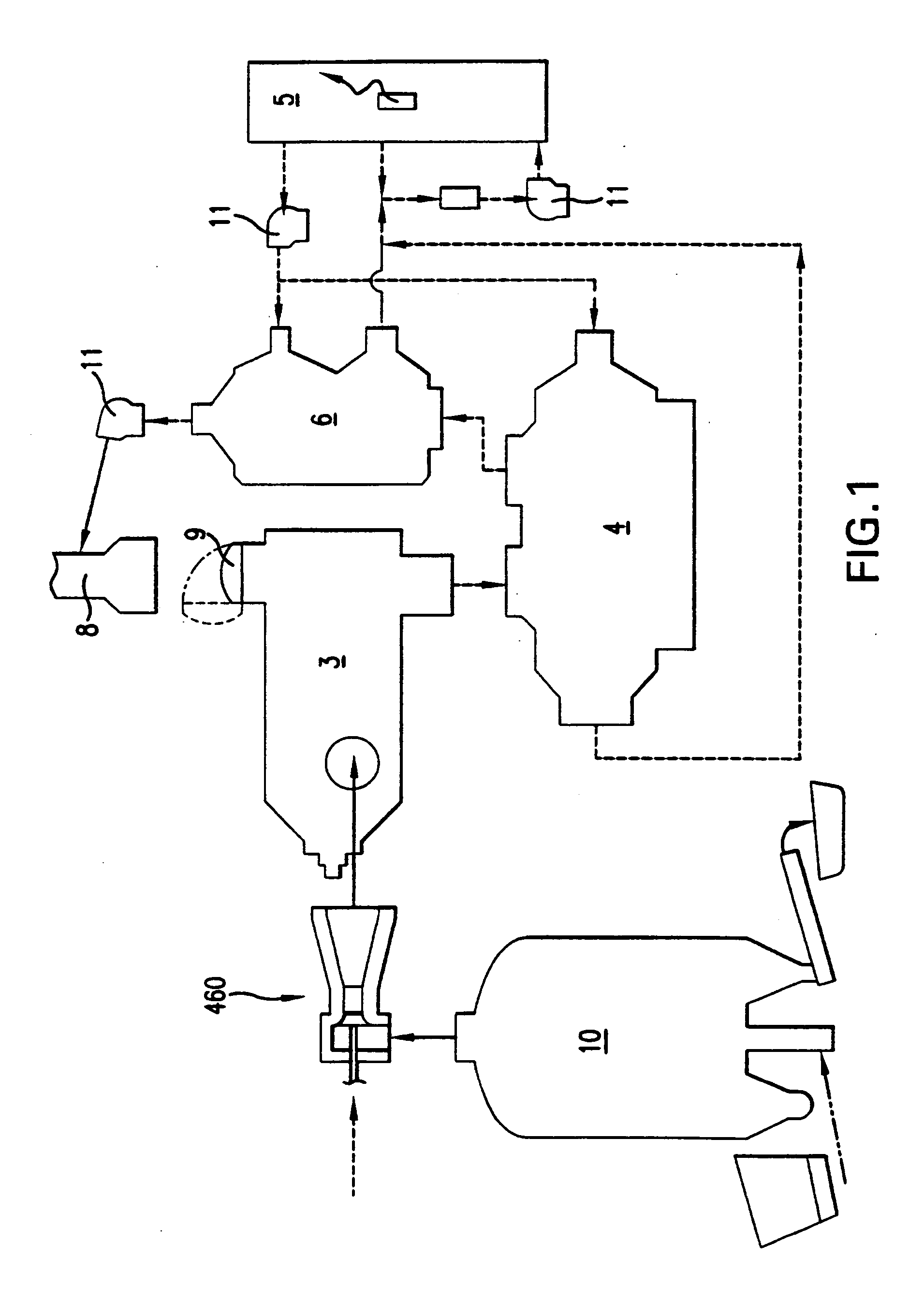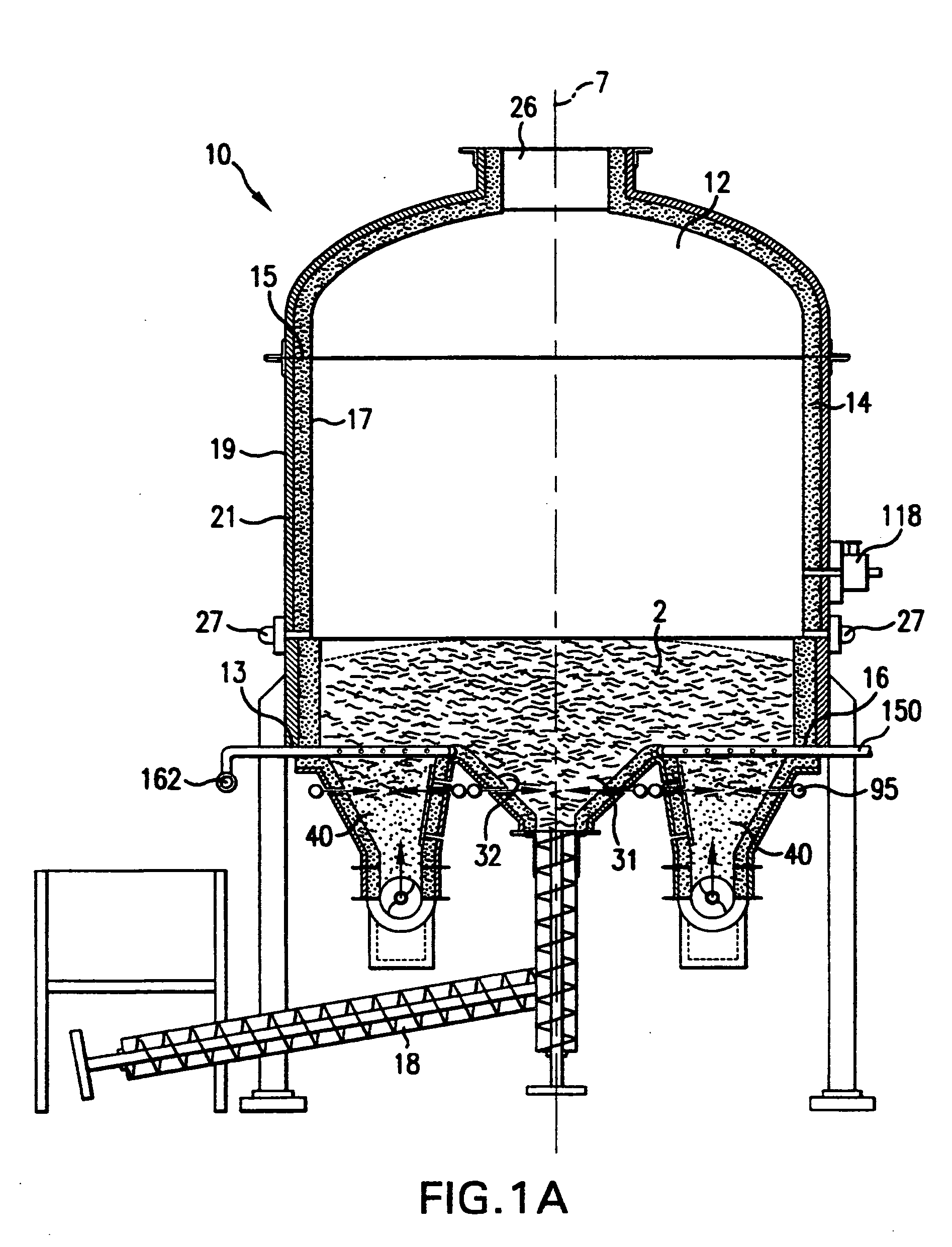Pyrolyzing gasification system and method of use
a gasification system and gasification method technology, applied in the direction of gasifier mechanical details, sustainable manufacturing/processing, combustion types, etc., can solve the problems of corroding slag formation, loss of potentially valuable by-products of the process, and undesirable operation at higher temperatures, so as to improve the efficiency of the gasifier system and improve the control of the ceramic heat exchanger. , the effect of high gasifier discharge temperatur
- Summary
- Abstract
- Description
- Claims
- Application Information
AI Technical Summary
Benefits of technology
Problems solved by technology
Method used
Image
Examples
Embodiment Construction
[0062] Referring now to the figures, the pyrolyzing gasification system and its method of use will now be described in detail. A schematic illustration of the system, shown in FIG. 1, includes an all-refractory gasifier 10, an all-refractory, staged cyclonic oxidizer 3, and an all refractory air-to-air indirect heat exchanger 4. The inventive system for recycling biomass waste into useful ash and recoverable heat energy without formation of toxic by-product gases provides partial primary combustion of biomass, or other solid fuel, within pyrolyzing gasifier 10. This combustion occurs at low substoichiometric air percentages of 10-30 percent and at temperatures below 1000 degrees F., forming a useable ash and a primary combustion flue gas. Following gasification, secondary combustion of the primary combustion flue gas is performed within a staged, cyclonic oxidizer 3, forming a generally clean oxidized flue gas. Following oxidation, heat energy is recovered from the oxidized flue gas...
PUM
 Login to View More
Login to View More Abstract
Description
Claims
Application Information
 Login to View More
Login to View More - R&D
- Intellectual Property
- Life Sciences
- Materials
- Tech Scout
- Unparalleled Data Quality
- Higher Quality Content
- 60% Fewer Hallucinations
Browse by: Latest US Patents, China's latest patents, Technical Efficacy Thesaurus, Application Domain, Technology Topic, Popular Technical Reports.
© 2025 PatSnap. All rights reserved.Legal|Privacy policy|Modern Slavery Act Transparency Statement|Sitemap|About US| Contact US: help@patsnap.com



